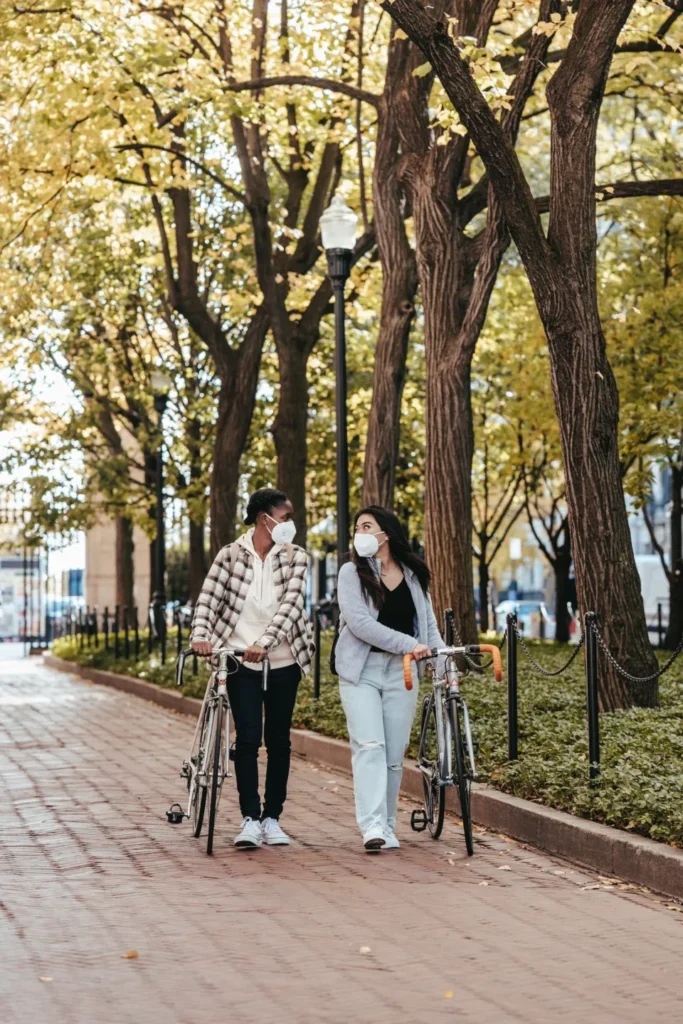When the response to the COVID-19 pandemic started in early Spring 2020, the drop-off of single-occupancy vehicle traffic across the country was extraordinary. As millions of people stayed at home, air quality improved, noise pollution decreased and we got an unexpected glimpse into a world without quite so many cars. There is a plethora of traffic data that is now becoming available that is providing insight into travel decisions and beginning to pave a new perspective on the future of transportation planning and traffic engineering. In this article, we summarize some of the trends and places where informative COVID-19 data is available, as well as predictions on potential future impacts and how industries may pivot to overcome these challenges and capitalize on new behaviors.

The dramatic shifts in travel behavior caused by the coronavirus have thrown a new light on our current reality and what the future might look like. The data shows that people want to travel less by car and public transit while under the current pandemic conditions and more by foot or bike – and these trends could persist in the future. It also shows that e-commerce is changing the retail field and that different configurations of public space and recreation may replace the old standard.
Streetlight Data has an online vehicle miles traveled (VMT) monitor which aggregates and shows daily counts of vehicle miles traveled, tracked by every county in the United States, compared to the average figure in January 2020. Even now, almost a full year since the beginning of COVID-19 restrictions and regulations, Denver is still seeing over 30% lower VMT average; Arapahoe, Jefferson and Douglas counties are all seeing traffic 20% -30% lower VMT. Outside of metro Denver, in the areas around Galloway’s other offices, the data shows similar VMT average day-to-day; the Salt Lake metro area at -27% decrease and the Fresno area a -29% VMT decrease. This data is updating and changing frequently. The above percentages are current as of February 1, 2021.
Reduction in non-essential travel has been tracked by Unacast since February 2020, and while the greatest reduction in non-essential travel in the Denver metro area occurred in April 2020, the December data shows a fluctuation between 50 and 65% reduction. Unacast creates the actual underlying social indexing score by combining tens of millions of mobile phones and their interactions with each other each day – and then extrapolating the results to the population level. This data shows that, overall, non-essential travel remains low across many areas of the United States, which has implications on work, shopping, and education.
However, despite the data showing that people prefer micro-mobility methods for getting to and from locations during COVID 19, the bikeshare and dockless e-scooter programs have struggled to remain open and operating. According to the Bureau of Transportation Statistics, “at the beginning of March 2020, 170 cities had a bikeshare (docked or dockless) and/or e-scooter system. As of August 2020, 46 of the 170 cities (27 percent) no longer have a bikeshare or e-scooter system. In these 46 cities, the bikeshare and/or e-scooter system remains suspended or closed permanently.” The Bureau of Transportation Statistics also shows that short trips have fallen significantly, which would have been made easier by having access to bikeshare and e-scooter programs; their measurement on trips ranging from one to three miles shows a decrease from December 2019 to December 2020 of nearly 40%.

Another impactful behavioral change that could have long-lasting implications on traffic and land development is the new explosion of online shopping. While most transportation-related data points show a significant decline compared with 2019, e-commerce has rocketed upwards. Personal online shopping had grown from 10% of the retail market in 2017 to 16% just before COVID-19 hit the United States. Online shopping nearly doubled in April and was still about 57% higher in June, according to Bazaar Voice Network.
Another recent behavioral change is the option and usage of store pick-up; trends are beginning to emerge of more retailers moving to a drive-thru model to better facilitate in-store collection. As of late March 2020, one-quarter of global connected consumers viewed click-and-collect options as an important delivery feature, according to Euromonitor International’s 2020 Digital Consumer Survey. While indoor space is less utilized due to the pandemic, customers are demanding convenient options for in-car pickup and delivery. Curb space is now highly coveted by a variety of users and retailers need to prioritize between elements such as expanded drive-thru, drive-thru pickup only windows, curbside delivery, priority parking for grab-and-go, reserved tenant parking, food delivery, patio space, pedestrian walk-up windows, and more.
Developers are making a strong push to add residential components, pedestrian-friendly trails, and parks to their malls—revitalizing the old, enclosed mall format and turning those areas into mixed-use spaces. When repurposing space for the residential market or to be mixed use, it will become critical based on the trends of COVID-19 to future-proof to the best of your ability when it comes to transportation systems. Incorporate reliable connections and paths throughout the space as well as to and from, while also providing feasible, easy options for walking, cycling, transit access, and parking.
ARN, which franchises a number of popular fast-food chains, including Taco Bell, is implementing solutions to better serve their customers. Kim Sims, director of real estate development, recognizes these opportunities and said, “we’re currently exploring new sites, retrofits, and smaller building footprints to provide pick-up only windows with mobile ordering for customers. Providing safe and fast service has always been the goal and we recognize that it is even more important moving forward.”
Looking closer at parking demand: is it going up or down? COVID-19 has created massive disruptions, and parking demand has not been spared. However, predicting the lasting behavioral changes that may occur as a result is a challenge dependent on several factors, such as:
While 2020 and the COVID-19 crisis are both things that we collectively want to leave far behind, it is of paramount importance that we view the COVID-19 crisis as an opportunity to change the way we think about transportation issues and the far reaching implications. Together, we can take advantage of this moment, by being deliberate and thoughtful about long term changes, truly being creative, and rising to meet the challenge. We will not be able to default to a pre-pandemic “normal” – but, with collaboration, innovation, and a passion for quality, we can create things never seen before and make tomorrow an even better place to live, travel, play, and be together.
We are nationally recognized and locally preferred. We would love to work with you on your next project.
Contact Us